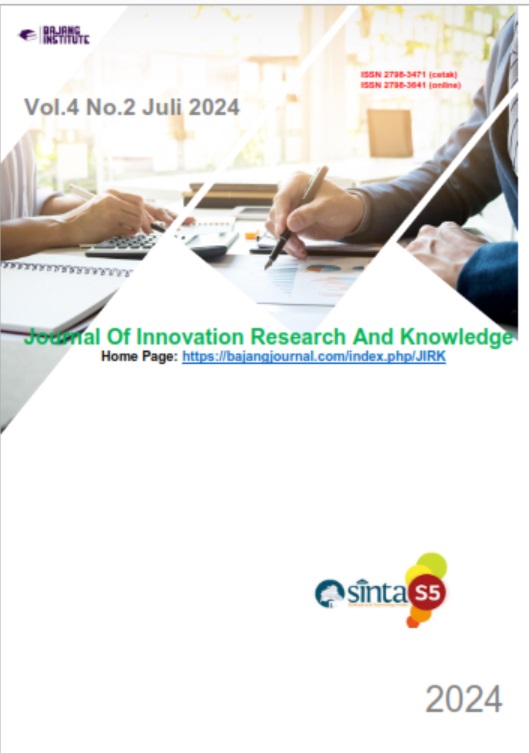FORMULASI PEMAHAMAN KARYAWAN TENTANG PENYAKIT AKIBAT KERJA DI DUNIA INDUSTRI KABUPATEN KARAWANG
DOI:
https://doi.org/10.53625/jirk.v4i2.8728Keywords:
Occupational Diseases, Occupational Health And Safety, Industry, Employee Understanding, Karawang, Cross-Sectional Survey, Risk Analysis, Occupational Health EducationAbstract
This study aims to evaluate employees' understanding of occupational diseases in various industrial sectors in Karawang Regency, one of the largest industrial areas in Indonesia. Occupational diseases are a significant health issue in industrial environments, especially in high-risk sectors such as manufacturing, automotive, textile, and chemical industries. A lack of understanding among employees about the risks and prevention of occupational diseases can increase the incidence rate, reduce productivity, and raise healthcare costs for both companies and workers. This research employs a cross-sectional survey design with a quantitative approach. Data were collected from 400 employee respondents across various industrial sectors using a stratified random sampling technique to ensure sample representativeness. A structured questionnaire was used to measure employees' understanding of the types of occupational diseases, risk factors, and occupational health and safety practices (OHS). Data analysis was conducted using descriptive statistics to illustrate the distribution of employee understanding and inferential statistics such as Chi-Square tests and logistic regression to identify factors influencing employees' comprehension. The results show that only 25% of employees have a high understanding of occupational diseases, while 45% have a moderate understanding, and 30% have a low understanding. Analysis by industrial sector shows that the manufacturing sector has the highest level of understanding (35%), followed by automotive (30%), textile (20%), and chemical (15%). These findings indicate a significant gap in employee understanding across various industrial sectors, which requires more specific and intensive OHS training and education approaches. This study concludes that to improve employees' understanding of occupational diseases, companies need to adopt more targeted, interactive, and evidence-based training strategies. Additionally, collaboration between companies and local government in designing effective OHS policies is essential to ensure optimal occupational health and safety. The implications of this study provide significant contributions to national occupational health policy and can serve as a reference for further research in similar contexts
References
Creswell, J. W. (2014). Research Design: Qualitative, Quantitative, and Mixed Methods Approaches (4th ed.). SAGE Publications.
Dinas Kesehatan Kabupaten Karawang. (2023). Laporan Tahunan Kesehatan Kerja di Fasilitas Kesehatan Kabupaten Karawang. Karawang: Dinas Kesehatan Kabupaten Karawang.
Hendarto, R. (2023). "The Role of Ergonomics in Enhancing Workplace Efficiency and Reducing Health Risks in Hospitals." Journal of Hospital Management and Administration, 8(2), 145-162.
Kementerian Kesehatan Republik Indonesia. (2022). "Pedoman Kesehatan Kerja di Fasilitas Kesehatan." Jakarta: Kementerian Kesehatan RI.
Murti, B. (2020). Prinsip dan Metode Penelitian Kesehatan Masyarakat. Yogyakarta: Gadjah Mada University Press.
Notoatmodjo, S. (2018). Metodologi Penelitian Kesehatan. Jakarta: Rineka Cipta.
Pratama, A. (2023). "Ergonomics and Employee Satisfaction in Primary Healthcare Settings: A Study on Administrative Staff." Journal of Public Health Research, 12(3), 213-229.
Rahmawati, L. (2021). "The Impact of Ergonomic Interventions on Work Efficiency and Health Complaints Among Administrative Staff in Public Health Centers." Thesis, Universitas Indonesia, Depok.
Santoso, H. (2022). "Ergonomic Approaches to Reducing Musculoskeletal Disorders in Puskesmas Staff." Dissertation, Universitas Airlangga, Surabaya.
Sugiyono. (2019). Metode Penelitian Kuantitatif, Kualitatif, dan R&D. Bandung: Alfabeta.
Tjandra, Y., & Herlambang, M. (2020). "Workplace Ergonomics and Its Impact on Employee Productivity and Health in Healthcare Institutions." Journal of Occupational Health and Safety, 15(1), 89-104.
Widodo, A. W. (2022). "The Correlation between Office Ergonomics and Employee Performance in Health Administration." International Journal of Health Services and Management Research, 10(4), 270-284.
World Health Organization (WHO). (2021). "Occupational Health: A Manual for Primary Health Care Workers." Geneva: World Health Organization.
Yusuf, M., & Fauziah, D. (2021). "The Role of Ergonomics in Reducing Musculoskeletal Disorders Among Office Workers in Healthcare Settings." Journal of Environmental and Occupational Health, 16(3), 150-162.
Zulkarnain, A., & Haryanto, S. (2023). "Evaluation of Ergonomic Risks in Hospital Administrative Departments: A Case Study." Asian Journal of Public Health Studies, 7(2), 98-115.













